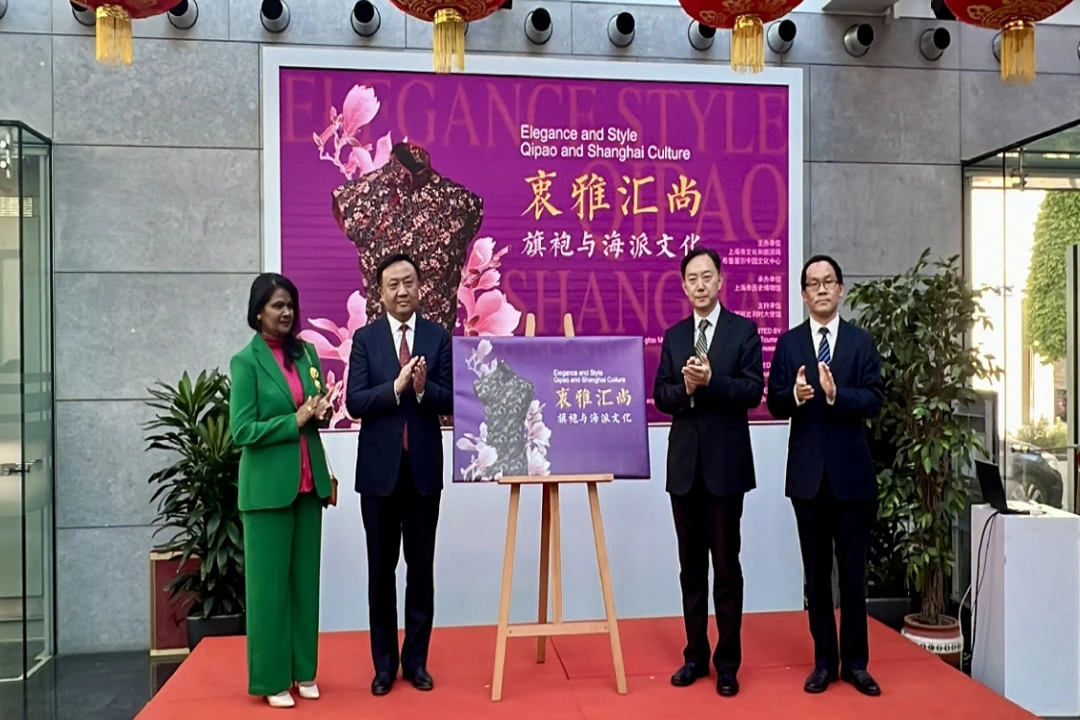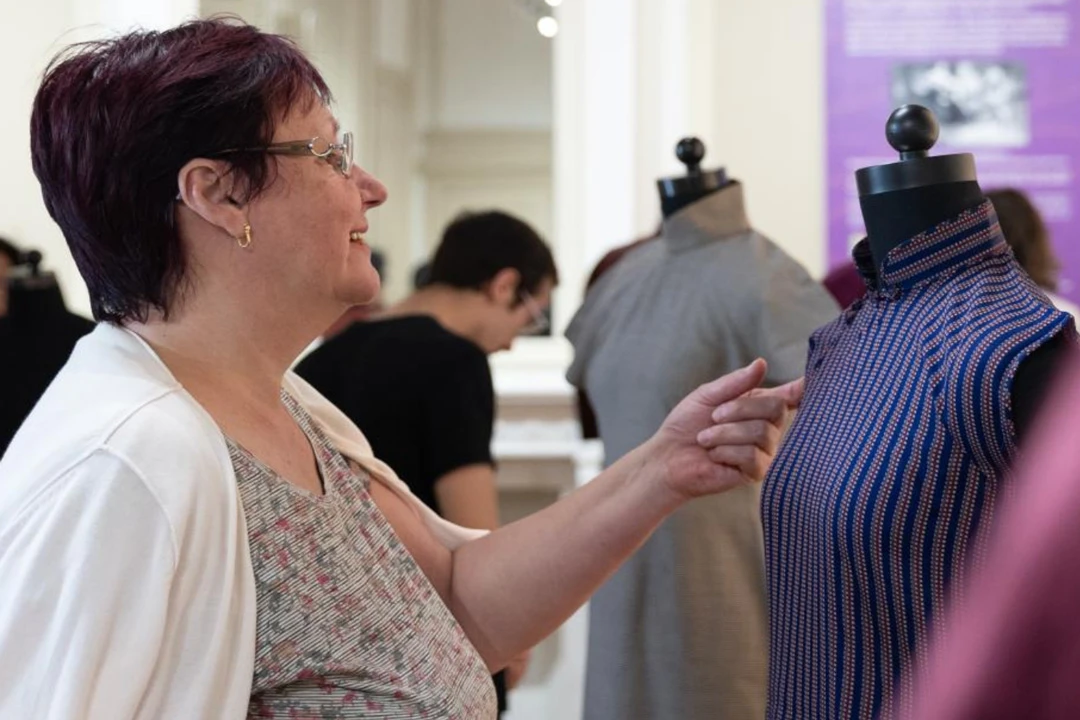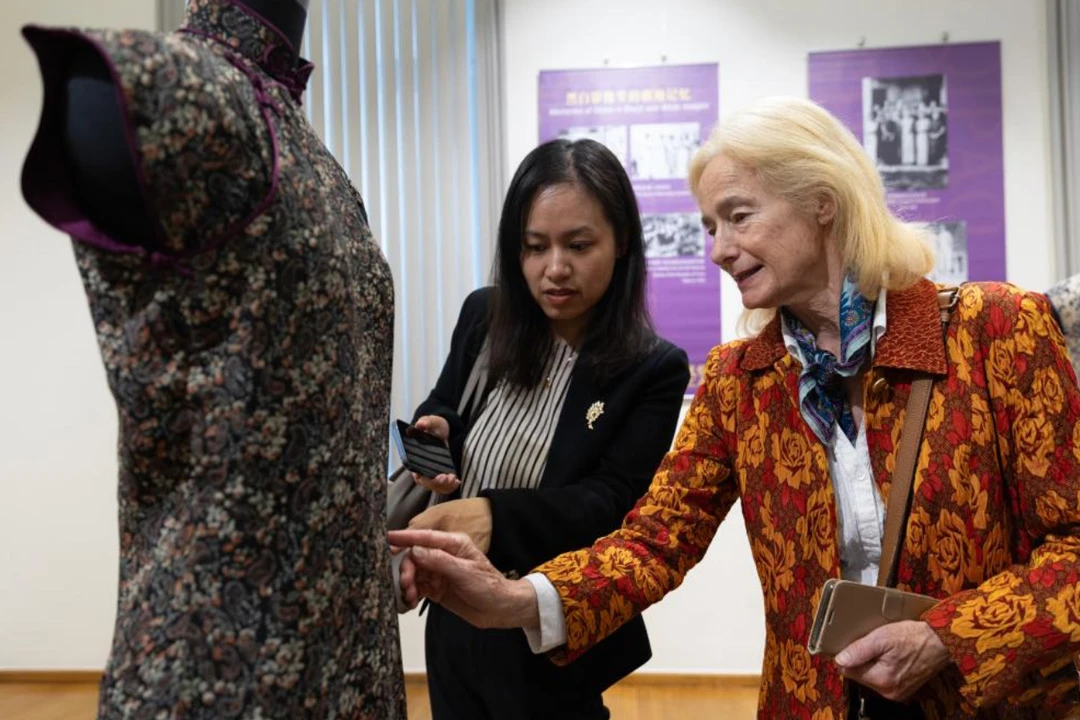The “Elegance and Refinement: Qipao and Shanghai-style Culture” exhibition, supported by the Chinese Embassy in Belgium and organized by the Shanghai Municipal Administration of Culture and Tourism, the China Cultural Center in Brussels, and the Shanghai History Museum, opened at the China Cultural Center in Brussels on May 13th.
The exhibition features over 30 exquisite qipao dresses, accompanied by historical images such as old photographs and advertising posters, showcasing the Shanghai-style qipao as an intangible cultural heritage that blends Chinese and Western characteristics, while also highlighting the enchanting cultural charm of Shanghai as the “Pearl of the Orient.”
Many members of the China-Belgium Qipao Association, who mostly live abroad and often wear qipao to participate in Chinese celebrations and performances, attended the event. He Yanqiong, the president of the association, said, “Every time I put on a qipao, it feels like I’m returning to my homeland.” She expressed, “We want to delve deeper into the study of qipao culture, to experience its charm and heritage, so that we can better showcase the elegance and beauty of qipao when promoting it abroad.”
Monica Jacobs, who has a strong interest in Chinese qipao culture, mentioned that the qipao she was wearing was custom-made for her by a designer in Beijing. “I wear qipao when attending friends’ weddings, and I believe wearing a Chinese qipao in Europe is very special. Seeing many friends wearing qipao to participate in today’s event makes me feel very happy,” she said.
The Shanghai-style modern qipao, which originated from traditional Chinese clothing but was influenced by Western tailoring styles, possesses the common aesthetic characteristics of both Chinese and Western clothing art. From its birthplace in Shanghai, the Shanghai-style qipao gradually gained popularity throughout the country and then spread to the world, becoming a fashionable garment for Chinese women. It has been hailed as a Chinese national treasure and women’s national dress, wielding a strong international influence.
Due to its design concepts and craftsmanship that showcase the uniqueness of Chinese traditional culture, the Shanghai-style qipao has garnered increasing attention from the international fashion industry in recent years. As more and more fashion elements are incorporated into its design, the Shanghai-style qipao has begun to display its unique artistic charm on the international fashion stage.
Hua Yuan, the Vice Mayor of Shanghai, and Wu Gang, the Chargé d’Affaires ad interim of the Chinese Embassy in Belgium, jointly unveiled the exhibition, which was attended by more than 100 Chinese and foreign guests.
In his opening speech, Wu Gang stated that Shanghai, located on the eastern coast of China, is a mega-city that has led the country in opening up to the world. The Shanghai-style qipao stands out on the world fashion stage and has been acclaimed as a Chinese national treasure. He expressed hope that this exhibition would further enhance the understanding of Chinese traditional clothing culture among the people of Belgium and Europe, allowing them to experience the urban landscape and people’s lives in contemporary China.
The exhibition not only serves as a window for the Belgian and European public to appreciate the beauty of traditional Chinese clothing but also provides an opportunity for cultural exchange and mutual understanding between China and Belgium. The event has attracted the attention of local media and fashion enthusiasts, who have expressed their admiration for the exquisite craftsmanship and elegant design of the Shanghai-style qipao.
The qipao, also known as cheongsam, has a long history dating back to the 1920s. It evolved from the traditional Manchu-style robe and was influenced by Western fashion trends of the time. The Shanghai-style qipao, in particular, is characterized by its form-fitting silhouette, high collar, and intricate embroidery or print patterns. It is often made from luxurious fabrics such as silk, satin, or brocade, and is considered a symbol of femininity, grace, and sophistication.
In recent years, there has been a resurgence of interest in the qipao, both in China and internationally. Many contemporary fashion designers have drawn inspiration from this iconic garment, incorporating modern elements and innovative techniques to create fresh interpretations of the classic style. The qipao has also been featured in numerous fashion shows, movies, and television series, further cementing its status as a cultural icon.
The “Elegance and Refinement: Qipao and Shanghai-style Culture” exhibition not only showcases the beauty of the qipao but also highlights the rich cultural heritage of Shanghai. As a cosmopolitan city with a unique blend of Chinese and Western influences, Shanghai has long been a center of fashion, art, and innovation. The exhibition offers a glimpse into the city’s fascinating history and the role it has played in shaping modern Chinese culture.
The opening of the exhibition in Brussels is a testament to the growing cultural ties between China and Belgium. In recent years, the two countries have engaged in numerous cultural exchange programs, including art exhibitions, music festivals, and film screenings. These events have helped to foster a deeper understanding and appreciation of each other’s cultures and have laid the foundation for further cooperation in the future.
As the exhibition continues its run at the China Cultural Center in Brussels, it is expected to attract more visitors and generate greater interest in Chinese traditional fashion and culture. The organizers hope that the event will inspire more people to explore the rich history and heritage of China and to appreciate the beauty and elegance of the Shanghai-style qipao.
In conclusion, the “Elegance and Refinement: Qipao and Shanghai-style Culture” exhibition in Brussels is a celebration of the timeless beauty and cultural significance of the qipao. It showcases the unique blend of Chinese and Western influences that have shaped this iconic garment and highlights the important role that Shanghai has played in the development of modern Chinese fashion and culture. Through events like this, we can continue to build bridges of understanding and appreciation between different cultures and promote the exchange of ideas and traditions that enrich our global community.



